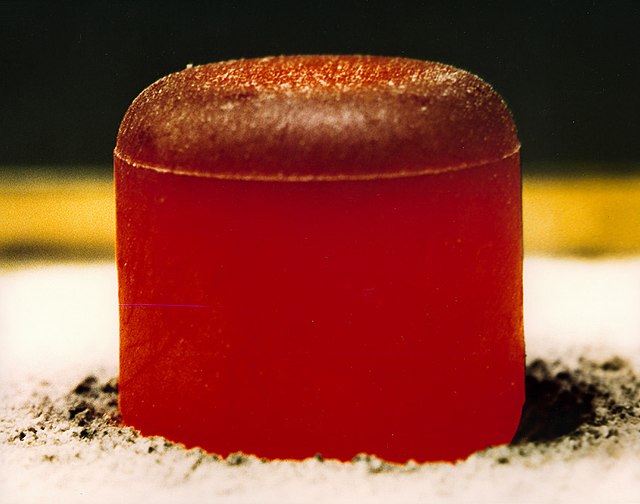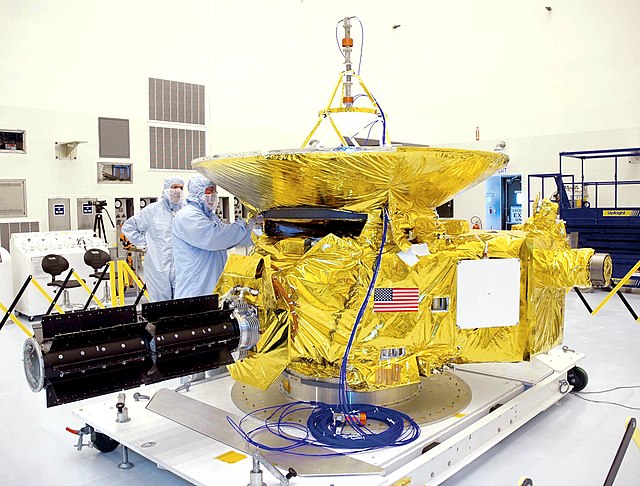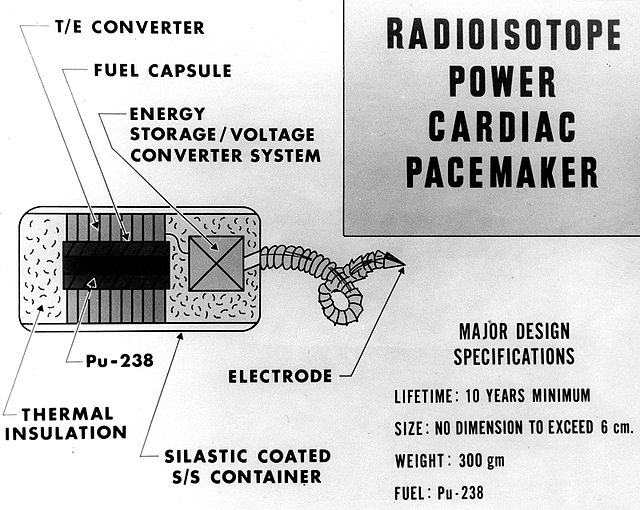Radioisotope thermoelectric generator
A radioisotope thermoelectric generator, sometimes referred to as a radioisotope power system (RPS), is a type of nuclear battery that uses an array of thermocouples to convert the heat released by the decay of a suitable radioactive material into electricity by the Seebeck effect. This type of generator has no moving parts and is ideal for deployment in remote and harsh environments for extended periods with no risk of parts wearing out or malfunctioning.
A pellet of 238PuO2 as used in the RTG for the Cassini and Galileo missions. This photo was taken after insulating the pellet under a graphite blanket for several minutes and then removing the blanket. The pellet is glowing red hot because of the heat generated by radioactive decay (primarily α). The initial output is 62 watts.
Inspection of Cassini spacecraft RTGs before launch
New Horizons in assembly hall
90Sr-powered Soviet RTGs in dilapidated condition.
An atomic battery, nuclear battery, radioisotope battery or radioisotope generator is a device which uses energy from the decay of a radioactive isotope to generate electricity. Like nuclear reactors, they generate electricity from nuclear energy, but differ in that they do not use a chain reaction. Although commonly called batteries, they are technically not electrochemical and cannot be charged or recharged. They are very costly, but have an extremely long life and high energy density, and so they are typically used as power sources for equipment that must operate unattended for long periods of time, such as spacecraft, pacemakers, underwater systems and automated scientific stations in remote parts of the world.
Radioisotope-powered cardiac pacemaker being developed by the Atomic Energy Commission, is planned to stimulate the pulsing action of a malfunctioning heart. Circa 1967.





